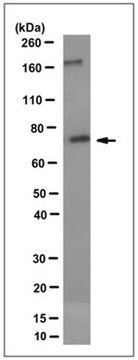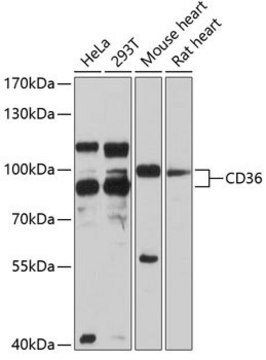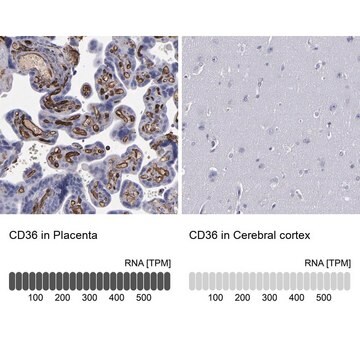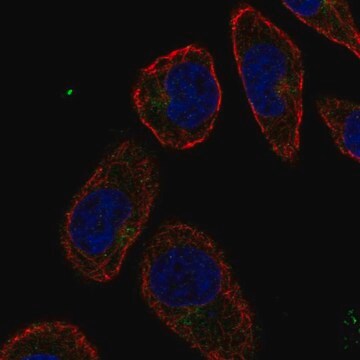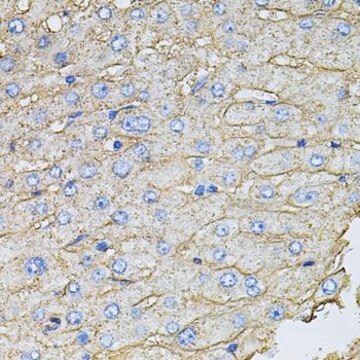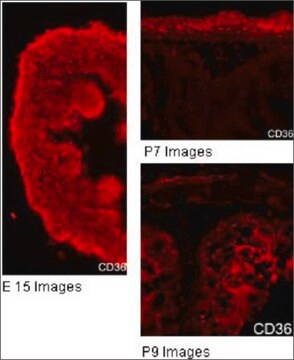MABF3056
Anti-CD36 Antibody, clone ZND36-6
About This Item
Polecane produkty
pochodzenie biologiczne
rat
Poziom jakości
białko sprzężone
unconjugated
forma przeciwciała
purified antibody
rodzaj przeciwciała
primary antibodies
klon
ZND36-6, monoclonal
masa cząsteczkowa
calculated mol wt 52.70 kDa
oczyszczone przez
using protein G
reaktywność gatunkowa
mouse
opakowanie
antibody small pack of 100 μg
metody
flow cytometry: suitable
immunocytochemistry: suitable
inhibition assay: suitable
izotyp
IgG2a
sekwencja epitopowa
Extracellular domain
numer dostępu Protein ID
numer dostępu UniProt
Warunki transportu
dry ice
docelowa modyfikacja potranslacyjna
unmodified
informacje o genach
rat ... Cd36(12491)
Opis ogólny
Specyficzność
Immunogen
Zastosowanie
Evaluated by Immunocytochemistry in NIH 3T3 cells.
Immunocytochemistry Analysis: A 1:25 dilution of this antibody detected CD36 in NIH 3T3 cells.
Tested Applications
Flow Cytometry: A representative lot detected CD36 in Flow Cytometry applications (Tsugita, M., et al. (2017). Cell Rep. 18(5):1298-1311; Omori, S., et al. (2021). Cell Rep. 34(6):108734).
Inhibition Assay: A representative lot of this antibody partially inhibited IL-1b secretion by bone marrow derived macrophages. (Tsugita, M., et al. (2017). Cell Rep. 18(5):1298-1311).
Note: Actual optimal working dilutions must be determined by end user as specimens, and experimental conditions may vary with the end user
Postać fizyczna
Przechowywanie i stabilność
Inne uwagi
Oświadczenie o zrzeczeniu się odpowiedzialności
Nie możesz znaleźć właściwego produktu?
Wypróbuj nasz Narzędzie selektora produktów.
Kod klasy składowania
12 - Non Combustible Liquids
Klasa zagrożenia wodnego (WGK)
WGK 2
Temperatura zapłonu (°F)
Not applicable
Temperatura zapłonu (°C)
Not applicable
Certyfikaty analizy (CoA)
Poszukaj Certyfikaty analizy (CoA), wpisując numer partii/serii produktów. Numery serii i partii można znaleźć na etykiecie produktu po słowach „seria” lub „partia”.
Masz już ten produkt?
Dokumenty związane z niedawno zakupionymi produktami zostały zamieszczone w Bibliotece dokumentów.
Nasz zespół naukowców ma doświadczenie we wszystkich obszarach badań, w tym w naukach przyrodniczych, materiałoznawstwie, syntezie chemicznej, chromatografii, analityce i wielu innych dziedzinach.
Skontaktuj się z zespołem ds. pomocy technicznej